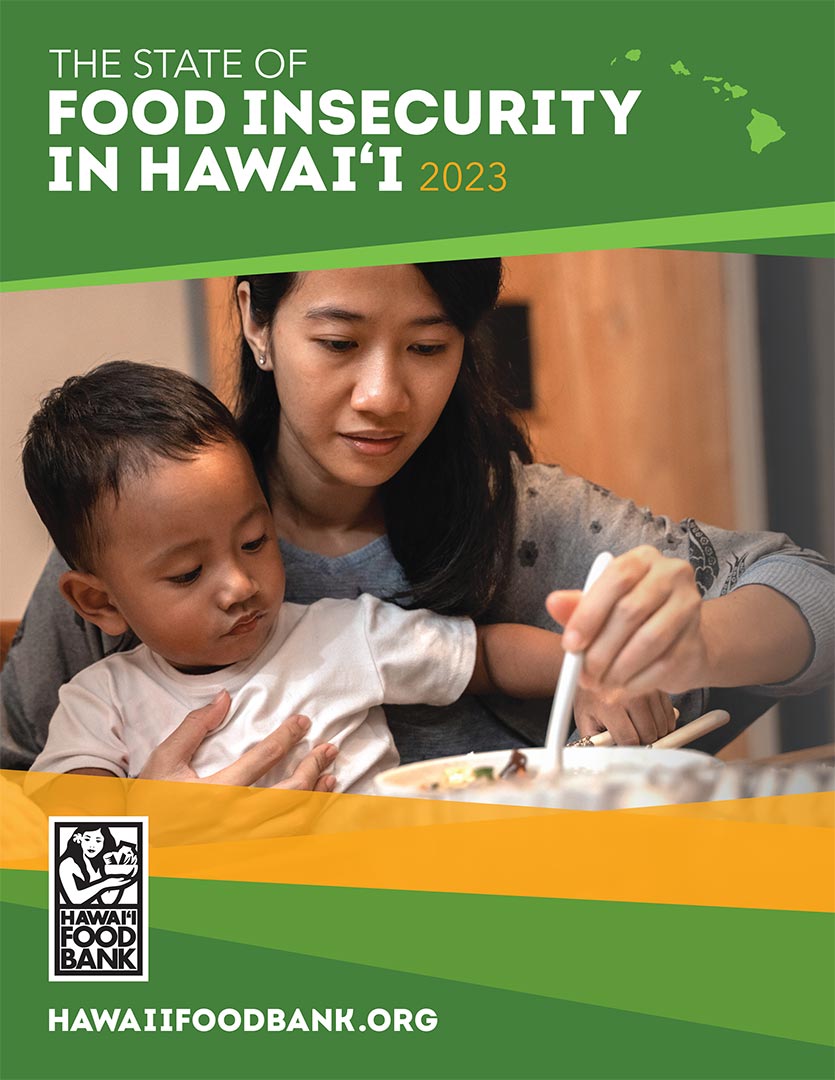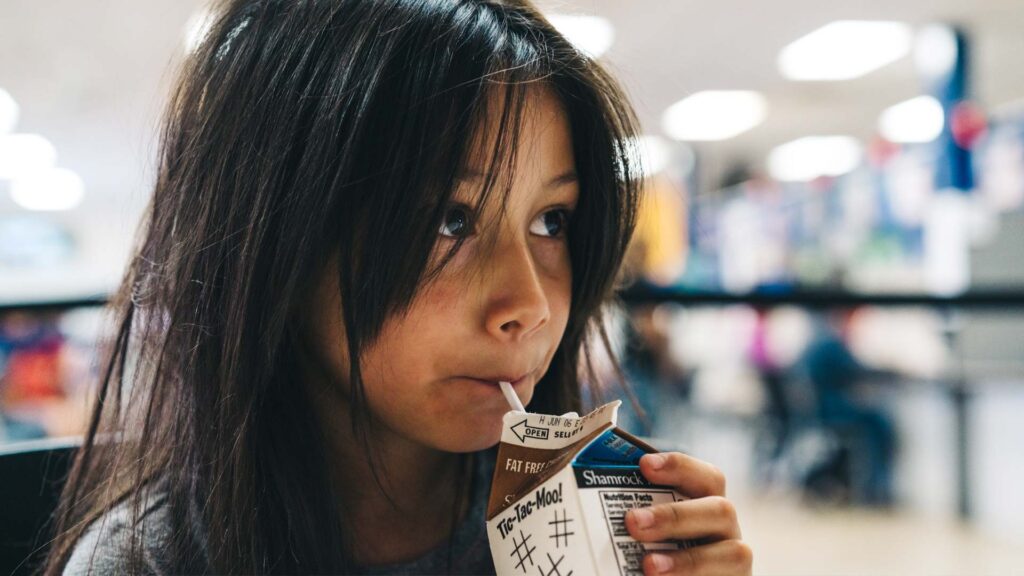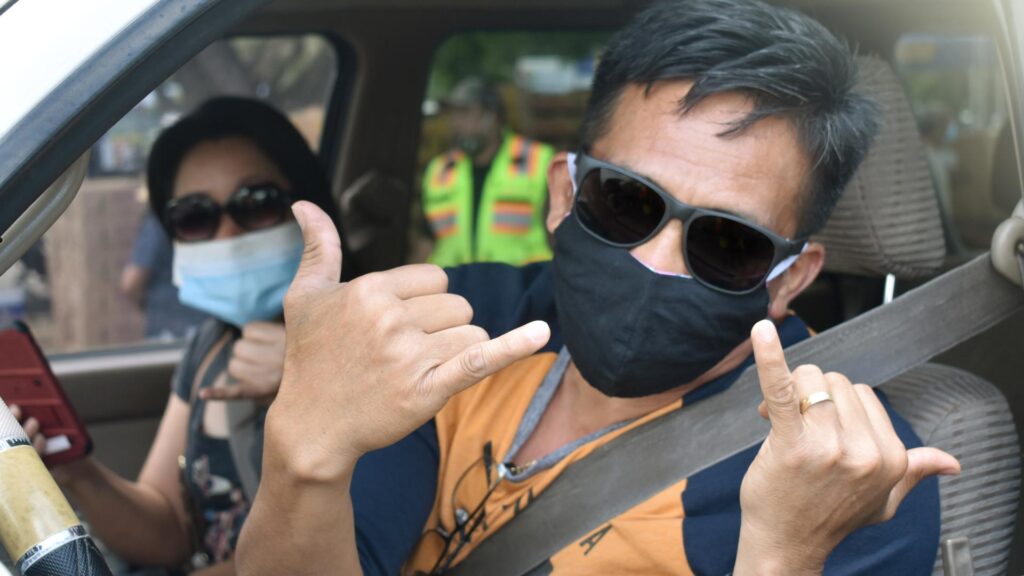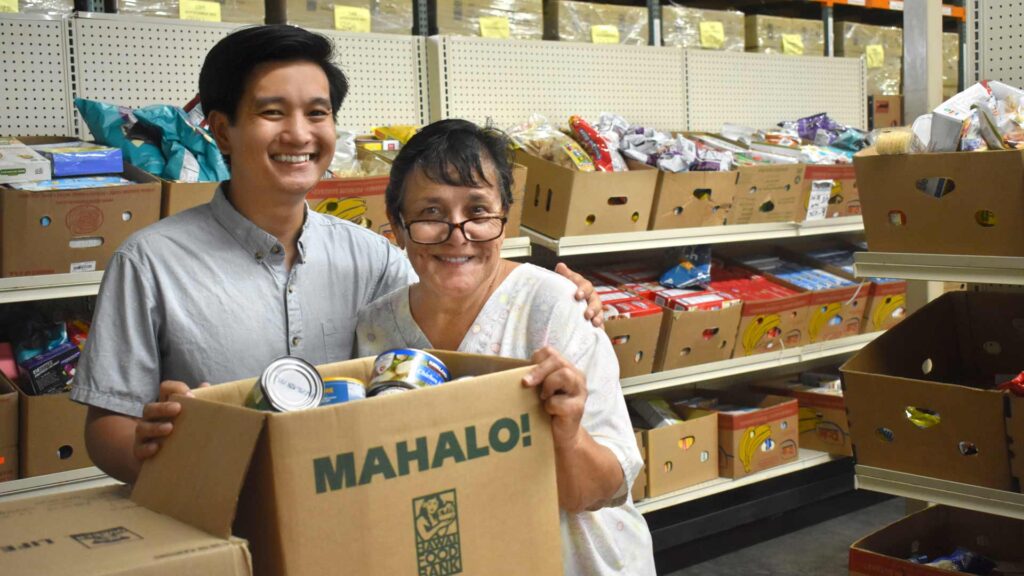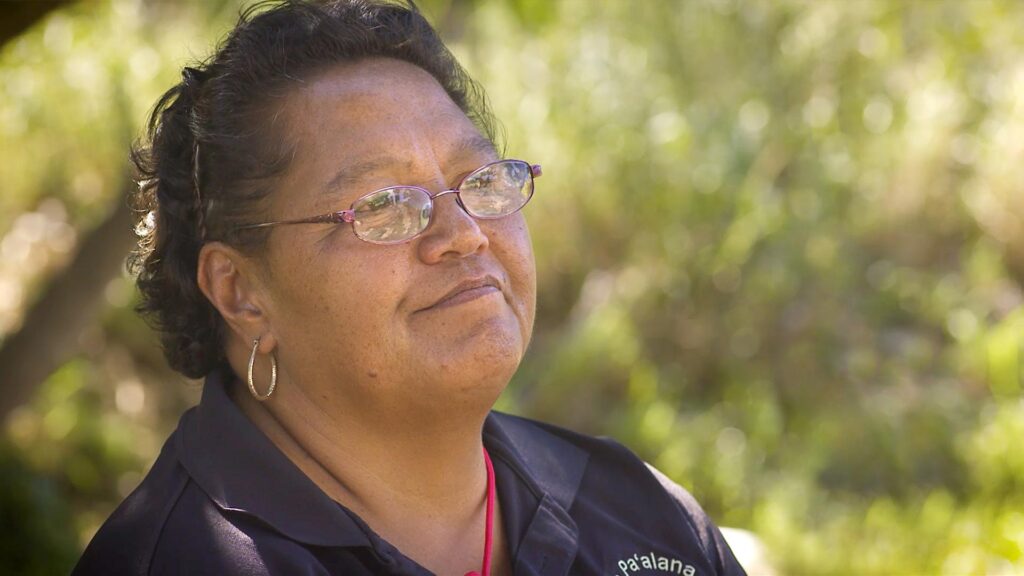About
Food Insecurity
Food is a basic human right. Nearly 1 in 3 households in Hawai‘i are food insecure — meaning they can't access the food they need to thrive.
Food insecurity in Hawai‘i is a complex issue. In order to address it, we must first understand it. To deepen understanding of food insecurity at the local level and to continue to strengthen opportunities for the communities we serve, Hawai‘i Foodbank commissioned The State of Food Insecurity in Hawai‘i, a comprehensive report that examines food insecurity in Hawai‘i.
The State of Food Insecurity in Hawai‘i
The State of Food Insecurity in Hawai‘i is the first report of its kind to comprehensively evaluate food insecurity in Hawai‘i using the full United States Household Food Security Survey Module (US HFSSM), the most validated food security measurement tool applied in population studies. The report provides critical insights for programs and policies seeking to improve food security. Overall, the findings suggest that, at 30%, food insecurity in Hawai‘i is a significant issue that will require targeted, collaborative and comprehensive solutions from all of us in the community
Nearly 1 in 3 Hawai‘i households are struggling with food insecurity.
In 29% of households with children, one or more keiki are food insecure.

What is Food Insecurity?

Food insecurity is the lack of access to enough food for an active, healthy life. It’s when people don’t have enough to eat and don’t know where their next meal will come from.
Food insecurity manifests in different ways — ranging from concerns about running out of food before there is money to buy more, to the inability to afford a balanced diet, reducing food intake, missing meals altogether, and, in extreme cases, not eating for whole days because of a lack of food and money.
Who Can Experience Food Insecurity?
The majority of people in Hawai‘i facing food insecurity are keiki, working families and adults living by themselves. But, food insecurity can happen to anyone. Food insecurity is part of a larger stystemic issue; it’s often a symptom of economic hardship and structural disparity — not an indication of personal failure.
For some, food insecurity is a temporary challenge. This can be caused by a job loss, an illness or medical expense, or any other unexpected income shock. In Hawai‘i, many families and individuals find themselves one paycheck away from facing food insecurity.
For others, food insecurity presents a more persistent, ongoing challenge. Key barriers include cost of living, unemployment, insufficient income, lack of access to transportation, health problems and other factors that can prevent adequate access to food.
Food insecurity is a complex issue that cannot be solved with one singular approach nor by one entity alone. Rather, alleviating food insecurity must be a shared community responsibility — one that unites efforts of food banks with both the public and private sector to ignite change.
Effects of Food Insecurity
Taken all together, food insecurity presents complex, long-term challenges linked to many negative health and socioeconomic outcomes, and, with 30% of Hawaii’s households considered food insecure, represents a major problem for the state.
Health and Well-Being
Food insecurity presents complex, long-term challenges linked to many negative health and socioeconomic outcomes, and represents a major problem for the state. Food insecure people face:
- Challenges in accessing nutritious foods and face barriers to consistently adopting healthy eating patterns.
- Higher probability of chronic disease.
- Higher rates of mental health issues, including depression, anxiety and sleep disorders.
Keiki and Long-Term Development
Food insecurity negatively impacts children at every age.
- Children 3 and younger who experience food insecurity “cannot learn as much, as fast or as well because chronic undernutrition harms their cognitive development during this critical period of rapid brain growth, changing the fundamental neurological architecture of the brain and central nervous system.”
- At older ages, food insecure children are not only more susceptible to becoming sick, but they can also suffer from other additional physical, developmental and cognitive impairments — resulting in lower academic achievement than that of their peers.
Economic Impact
Food insecurity presents a serious public health problem for the entire community. When extrapolated, these considerations take a serious toll on health care resources and the economy.
- Food insecurity is associated with an additional $1,863 in health care costs annually.
- For Hawai‘i, at an estimated food insecurity rate of 30%, that translates to $800 million per year in added health care costs.
Elevating Voices in Our Community
The movement to end hunger in Hawai‘i begins with putting people facing hunger at the center of everything we do. Read stories from around our ‘ohana to learn more about how food insecurity affects our communities, as well as how we can join together to end hunger for good.
Feeding Our Future: Iliana’s Story
Full Circle: Kamalani’s Story
Overwhelming Joy: Ferdinand’s Story
Building Rainbows: Auntie Audrey’s Story
Still Writing: Sweets’ Story
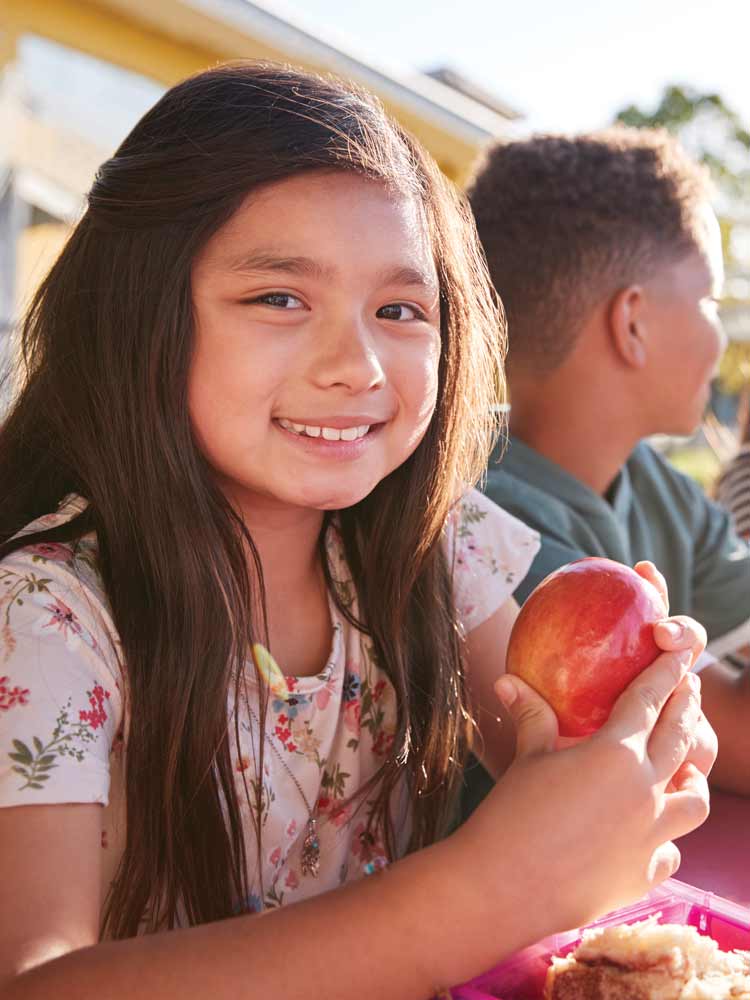
About Hawai‘i Foodbank

As Hawai‘i’s largest hunger-relief organization, Hawai‘i Foodbank works collaboratively with a network of more than 225 agency partners on O‘ahu and Kaua‘i, along with affiliate food banks Maui Food Bank and The Food Basket, to provide food assistance to the State of Hawai‘i. Hawai‘i Foodbank is currently serving nearly 160,000 people each month and, last year, distributed food for nearly 17 million nutritious meals — a quarter of which was fresh, healthy produce. Hawai‘i Foodbank stands ready with its partners across the state and nation to develop targeted, collaborative and comprehensive strategies to continue to meet the community’s immediate needs while also working to expand its long-term impact.
Nationwide Support and Accountability
Hawai‘i Foodbank is a certified member of Feeding America – the nation’s largest hunger-relief organization, encompassing a network of 200 food banks across the United States. Certification means Hawai‘i Foodbank is held to the highest standards for food handling, storage and distribution, financial management, organizational stability, board governance, and more.

